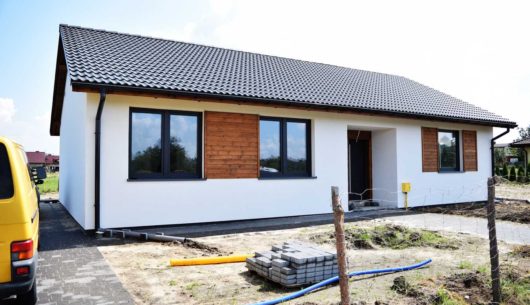Blog
Acoustic insulation of walls, or how to soundproof a house
A lawnmower at your neighbour’s, children playing on a nearby playground, cars moving on a busy road in your housing estate… all of this can affect your comfort in your own home. Noises coming from outside are not conducive to our peace of mind, which we care about after returning from work or during a weekend rest. Proper acoustic insulation of walls is very important and allows you to effectively soundproof the building. We feel an increasing need for silence, especially when we spend most of our time in the city, working or studying. There are many ways to soundproof your home, some of them do not require large financial outlays and complicated work.

Up to 70% of sound absorption
Such an ability is demonstrated by acoustic plasters that are laid on spray walls of plaster with soundproof properties. It is one of the easiest ways to make your home quieter. Plasters, however, limit us with other wall coverings, they cannot be wallpapered and covered with plaster. They reduce reverberation, disperse sounds, and absorb them in the amount of up to 70%. The sound absorption coefficient of acoustic plasters ranges from 0.35 to 0.60. We can use silicate or cellulose (in their case, the final thickness of the covering will be thinner).
Up to 95% sound absorption
This is even more than in the case of acoustic plasters. Isophone cork plates have such properties. They are perfect if you don’t want the sounds to spread around the room. The plates are made of porous cork agglomerate. They can be left in this form or finished, for example, with a decorative wallpaper.
5-7 dB higher insulation
Houses with skeletal partition or load-bearing walls can be cladding made of acoustic plasterboard. They are characterized by insulation 5-7 dB higher than ordinary plasterboards. They are screwed to the grate made of posts made of steel or wood. In addition, mineral wool with sound-dampening properties is laid between them. The penetration of sound is clearly limited by the crystalline structure of the plaster core of the board and other additives used in them. It should also be emphasized that the albums also muffle airborne sounds, i.e. conversations and music, which are transmitted in the form of waves in the air.
Sound absorption coefficient from 0.17 to 1.08
MDF boards are also used to produce wood-based acoustic panels. They effectively dampen and disperse sounds, reduce reverberation, and their sound absorption coefficient is between 0.17 and 1.08. They also have a very decorative character and do not require additional elements that give the interior a fashionable look. The panels come in the form of slabs of various widths and heights. They can also be in the form of oblong elements.
Sound reduction index 30-34 dB
Frame walls and grates can be additionally equipped with soundproof foil, which is used to wrap the profiles. It comes in two variants – modified PVC or rubber. Always place it between the grate and the slabs. It is flexible, but relatively heavy and has a low thickness. When installing it, care should be taken so that no gaps are created between its individual belts.
The construction of the walls is also of great importance for soundproofing the house. Single-layer walls are advantageous in this case, in the case of two-layer walls, it is crucial to properly perform the insulation layer, which additionally supports the acoustic properties of the walls. Timber frame walls should be filled with mineral wool, which ensures good soundproofing.
See also: dormer or roof window in the attic?